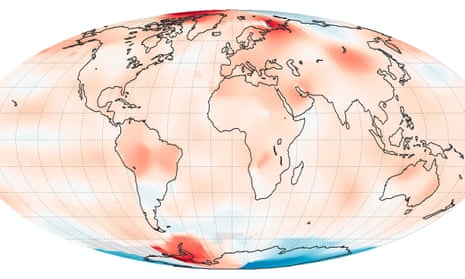Global warming obviously refers to temperature increases across the entire globe. We know the Earth is warming, we know it is human-caused, we have a pretty good idea about how much the warming will be in the future and what some of the consequences are. In fact, when it comes to the Earth’s average climate, scientists have a pretty good understanding.
On the other hand, no one lives in the average climate. We live spread out north, west, east, and south. On islands, large continents, inland or in coastal regions. Many of us want to know what’s going to happen to the climate where we live. How will my life be affected in the future?
This type of question is answered in a very recent study published by scientists from the University of Massachusetts at Amherst. The team, which includes Dr. Raymond Bradley and researcher Dr. Ambarish Karmalkar looked specifically at the Northeastern United States. They found that this area will warm much more rapidly than the globe as a whole. In fact, it will warm faster than any other United States region. The authors expect the Northeast US will warm 50% faster than the planet as a whole. They also find that the United States will reach a 2 degree Celsius warming 10–20 years before the globe as a whole.
So why does this matter? Well first, it matters because some of the effects people will experience are directly tied to the temperature increase in their region. For instance, we know that warmer air leads to more intense precipitation. In fact, we are already observing increases in very heavy rainfall across the United States (especially in the Northeast). Based on this new research, that trend will only get worse. It means that winters in this region will get warmer and wetter – more winter precipitation will likely occur as rain rather than snow. This affects the availability of water into the spring months. It also means that summers will have more intense heat waves which will lead to more severe droughts.
However, there is another impact to this study. We often hear that it is important to avoid increasing the Earth’s temperature by 2°C if we want to prevent the worst risks of climate change. This 2-degree target is somewhat based on science and somewhat based on messaging and politics. There’s nothing magic about this number. It isn’t like everything will be fine so long as we stay below 2 degrees; similarly the world won’t end if we exceed 2 degrees.
It turns out that staying below a 2°C warming means we think we have a reasonable chance of avoiding some of the worst climate impacts and some of the potentially disastrous tipping points. But this is really just an educated guess. Some people have argued convincingly that our target should be lower, perhaps 1.5°C. Others argue that even 2°C is not achievable.
Regardless of the so-called temperature target, what this study shows is that even if we do keep the globe as a whole to a 2°C temperature increase, some regions, like the Northeast United States will far exceed this threshold. So, what is “safe” for the world is unsafe for certain regions.
Not to muddy the waters, but the whole issue of “safe” versus “unsafe” also depends on what climate effects we are concerned about and where we live. As an example, if you are concerned about heavy precipitation and flooding in your area, then local climate change (in your area) is pretty important to you. Conversely, if you are concerned about sea level rise (which is a global phenomenon), then the global temperature change is of most interest.
So really, what this latest paper does is provide sound evidence that we need to keep in mind BOTH the global and the regional climate effects. We need to think about which effects we care about most and how the global and regional temperature changes will cause those effects. Furthermore, we cannot simply be lulled into a sense of safety even if we reduce emissions dramatically and keep global temperature changes small. There still could be large effects in our neighborhood.

Comments (…)
Sign in or create your Guardian account to join the discussion